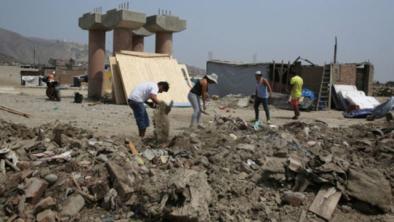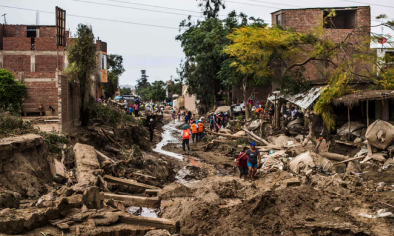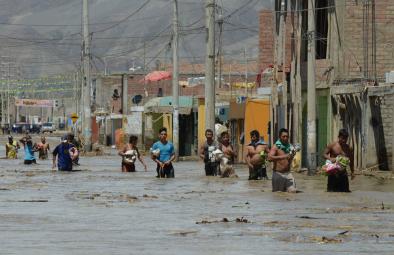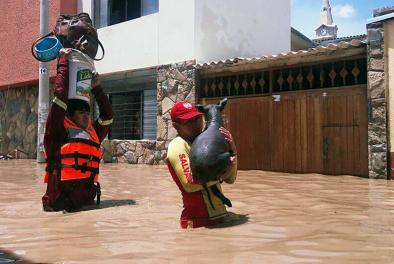Heavy rains cause landslides, flooding in Colombia and Peru

Heavy rainfall has caused devastating flood and landslides in Colombia and Peru, with heavy casualties, damage to property and infrastructure and economic disruption.
...
Omar Franco, director of the Institute of Hydrology, Meteorology and Environmental Studies of Colombia (Ideam), warned that, as of 3 April, more than 500 municipalities are at risk of landslides. Of these, 182 have already orange to red alert. The causes are diverse and are linked to extreme weather events, combined with deforestation and inadequate and clandestine land use.
...
"Climate variability and climate change will continue to produce rain and drought," Franco said, adding that Colombian municipalities should review and update their risk maps, "but prevention is the most important thing," he concluded.
...
“This is and will be one of the hottest autumns of recent years. When the normal sea temperature rises, the air also responds well. The sea of the northern beaches is warm. Climate change is a reality, a way to manifest itself is when these events like El Niño occur more frequently and more intensely", said Grinia Ávalos, director of climatology at Senamhi.
...
Peru has experienced exceptionally heavy rain during January-March – especially in the month of March. This is linked to a coastal El Niño event, which is impacting Peru and parts of Ecuador. The province of Piura, in northwest Peru, received a record 258.2 mm in the space of 24 hours earlier in March. On March 30, it received its second highest total 147.7 mm.
...
The capital, Lima, is currently experiencing an unusual wave of heat. Nelson Quispe, director of the forecast area of Senamhi, announced that the anomalies are such that if the normal temperature in Lima during the fall is 22° Celsius, the prediction for the next weeks is between 28° and 30° Celsius.
“This is and will be one of the hottest autumns of recent years. When the normal sea temperature rises, the air also responds well. The sea of the northern beaches is warm. Climate change is a reality, a way to manifest itself is when these events like El Niño occur more frequently and more intensely", said Grinia Ávalos, director of climatology at Senamhi.
Related Content






